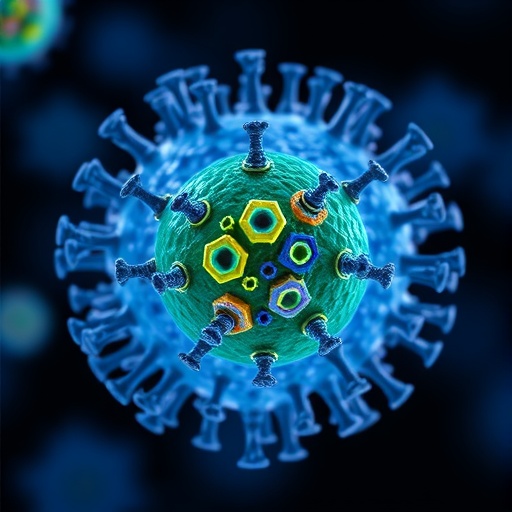In recent years, chimeric antigen receptor (CAR) T-cell therapy has revolutionized the landscape of cancer treatment, particularly in hematologic malignancies. This cutting-edge immunotherapy harnesses the patient’s own immune system to uniquely target and annihilate cancer cells, signaling a paradigm shift from traditional modalities such as chemotherapy and radiation. The intricate mechanisms behind CAR T-cell therapy, its expanding scope in clinical applications, and the challenges faced in solid tumors form the crux of one of the most promising frontiers in oncology today.
CAR T-cell therapy functions by engineering a patient’s T cells to express synthetic receptors that recognize specific antigens on cancer cells. These receptors, known as CARs, combine antigen-recognition domains derived from antibodies with T-cell activation domains, thereby redirecting T-cell specificity and cytotoxicity toward malignant targets. The process begins with leukapheresis, where T cells are harvested from the patient’s blood. These cells are then genetically modified ex vivo using viral vectors to incorporate CAR constructs before undergoing expansion and ultimately reinfusion. Upon administration, CAR T-cells proliferate and seek out tumor cells expressing the targeted antigen, leading to targeted lysis and tumor regression.
The hallmark of CAR T-cell therapy’s success is its efficacy in hematologic cancers, such as B-cell acute lymphoblastic leukemia (B-ALL), diffuse large B-cell lymphoma (DLBCL), and multiple myeloma. CD19, a surface protein ubiquitously expressed on B cells, has been the primary antigenic target in various approved CAR T-cell products, demonstrating high remission rates even in refractory and relapsed cases. Clinical trials have reported durable responses with some patients achieving complete remission lasting years. This remarkable turnaround for aggressive and previously treatment-resistant leukemias has elevated CAR T-cell therapy from experimental status to frontline consideration.
Despite triumphs in blood cancers, the application of CAR T therapy in solid malignancies remains fraught with barriers. Solid tumors pose a complex immunosuppressive microenvironment that hinders T-cell infiltration and persistence. Moreover, the antigenic heterogeneity and physical stromal barriers limit effective targeting by CAR T-cells. Unlike hematologic tumors, the lack of a universally expressed tumor-specific antigen presents a challenge in avoiding on-target off-tumor toxicity, where normal tissues expressing low levels of the target antigen could be damaged. Sophisticated CAR designs targeting multiple antigens or employing logic-gating methods are under investigation to improve specificity and reduce adverse effects.
In addition to antigen escape and tumor heterogeneity, cytokine release syndrome (CRS) and neurotoxicity constitute significant safety concerns in CAR T-cell therapy. CRS results from excessive immune activation, releasing a surge of inflammatory cytokines leading to fever, hypotension, and multi-organ dysfunction if unchecked. Neurotoxicity, often manifesting as confusion, seizures, or cerebral edema, remains incompletely understood but is a critical consideration in patient management. Advances in early detection, grading, and intervention with agents like tocilizumab have improved the safety profile, enabling wider clinical adoption.
The evolution of CAR T-cell platforms continues rapidly, with second and third-generation constructs incorporating co-stimulatory domains such as CD28 or 4-1BB to enhance T-cell proliferation, persistence, and antitumor activity. Novel approaches are also underway, employing armored CAR T-cells that secrete immunostimulatory cytokines or checkpoint blockade molecules to circumvent tumor immunosuppression. Furthermore, universal or allogeneic CAR T-cell therapies derived from healthy donors are being developed to overcome limitations of autologous manufacturing, reducing production time and costs.
Manufacturing CAR T-cells is a complex and resource-intensive process requiring stringent quality control to ensure cell viability, transduction efficiency, and potency. Personalized production, involving the patient’s own cells, introduces variability and possible delays, emphasizing the urgency for standardized scalable approaches. Regulatory challenges also persist due to the novelty of this living drug, necessitating robust long-term safety monitoring, particularly for insertional mutagenesis and secondary malignancies.
Emerging studies indicate the potential of combining CAR T-cell therapy with established treatments such as checkpoint inhibitors, chemotherapy, or radiation to potentiate antitumor efficacy and overcome resistance mechanisms. This multi-pronged strategy aims to remodel the tumor microenvironment to be more permissive to immune effector functions, thereby enhancing CAR T-cell infiltration and activity. Early-phase clinical trials exploring these combinatorial regimens show promise in extending responses and addressing relapse.
Personalized antigen selection tailored to the molecular landscape of individual tumors may further refine CAR T therapy. Advances in single-cell sequencing and proteomics enable identification of novel tumor-associated antigens, guiding bespoke CAR design. Integrating biomarkers predictive of response and toxicity will enhance patient selection and optimize therapeutic outcomes, moving toward precision immunotherapy.
The future of CAR T-cell therapy beckons exciting innovations beyond oncology. Investigations into autoimmune diseases, infectious diseases, and even transplant rejection highlight the versatility of engineered T cells as a therapeutic modality. The ability to precisely redirect immune responses holds transformative potential across a spectrum of otherwise intractable pathologies.
In conclusion, CAR T-cell therapy stands at the vanguard of cancer immunotherapy, offering unprecedented specificity and efficacy in hematologic malignancies while grappling with the inherent complexity of solid tumors. Continued research into optimizing CAR designs, improving safety, enhancing manufacturing, and broadening clinical indications promises to unlock new horizons. As the field matures, CAR T-cell therapy is poised to rewrite the narrative of cancer treatment, providing hope to countless patients worldwide.
The dynamic interface between immunology, genetic engineering, and clinical oncology embodied by CAR T cells illustrates the power of convergence science. With ongoing innovation and collaboration across disciplines, the dream of converting cancer into a controllable or even curable disease advances ever closer to reality. The revolution sparked by CAR T-cell therapy invites the medical community and society at large to reimagine the limits of therapeutic possibility.
—
Article References:
Kuttiappan, A., Chenchula, S., Vardhan, K.V. et al. CAR T-cell therapy in hematologic and solid malignancies: mechanisms, clinical applications, and future directions.
Med Oncol 42, 376 (2025). https://doi.org/10.1007/s12032-025-02923-x




